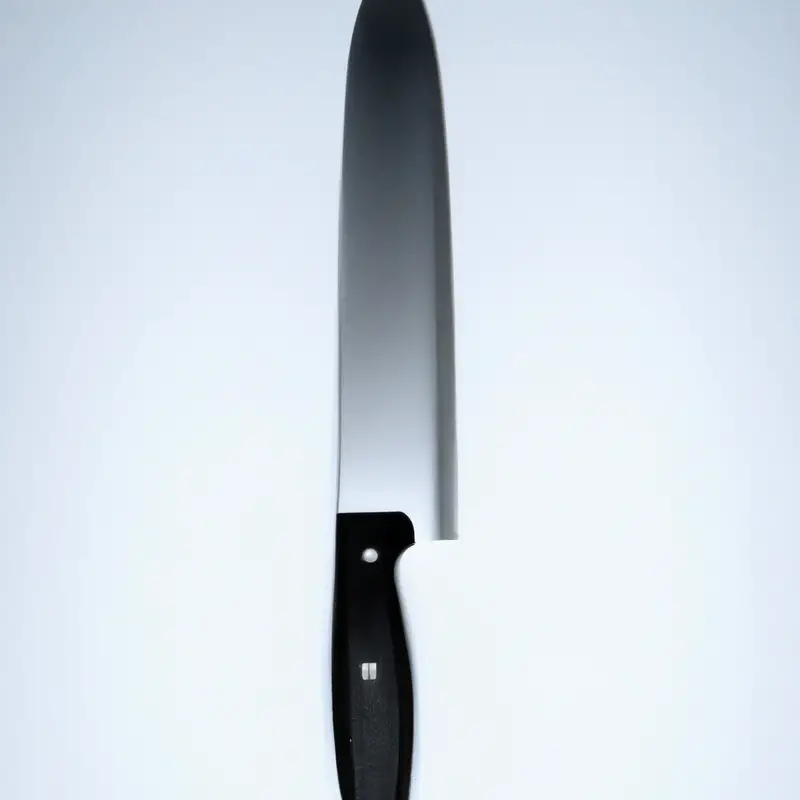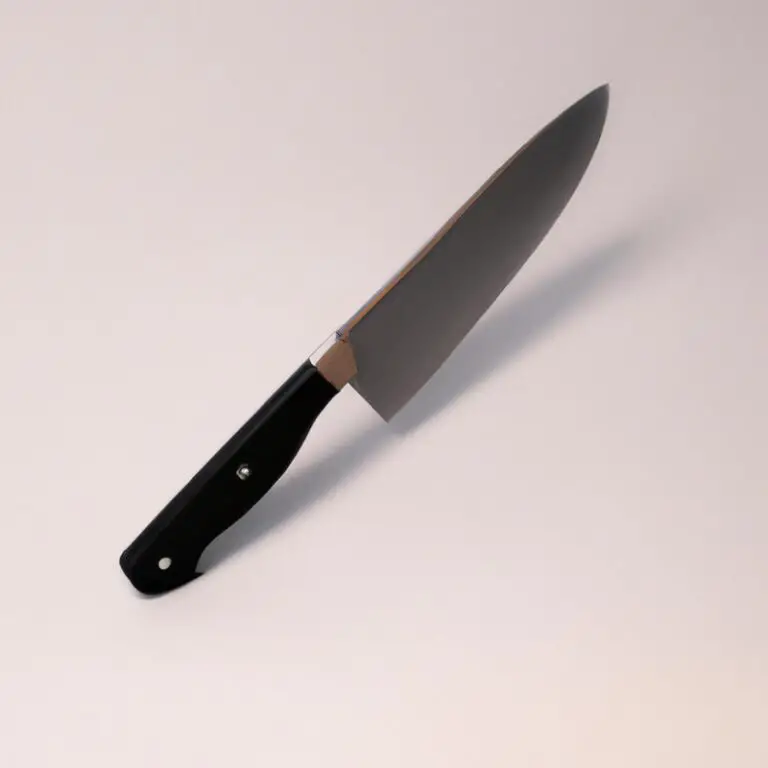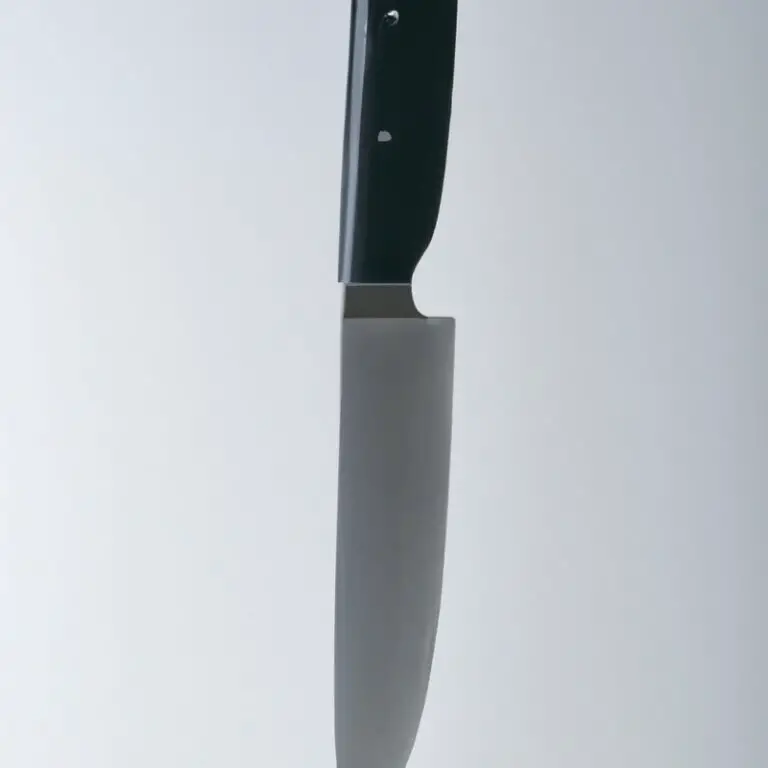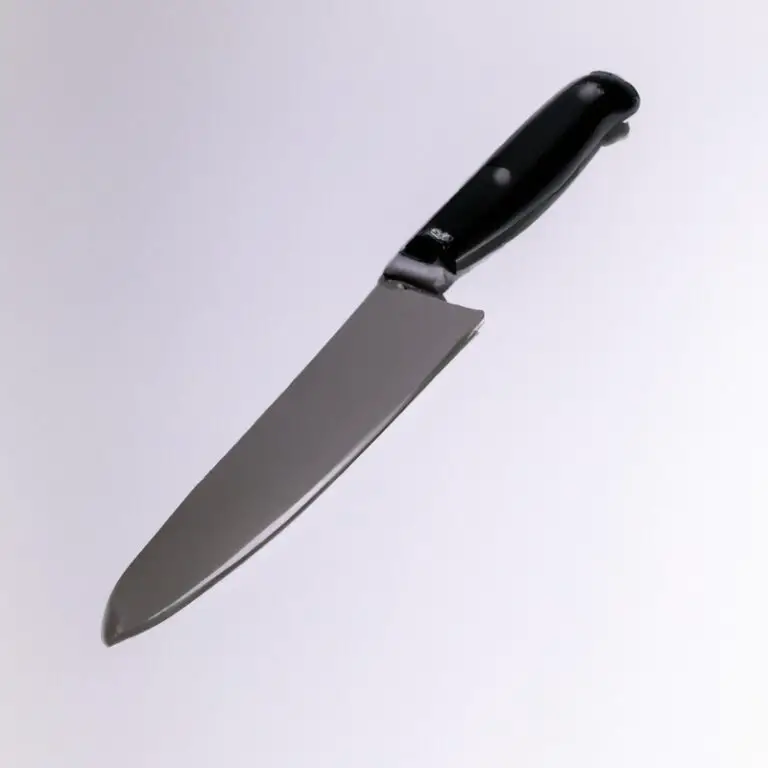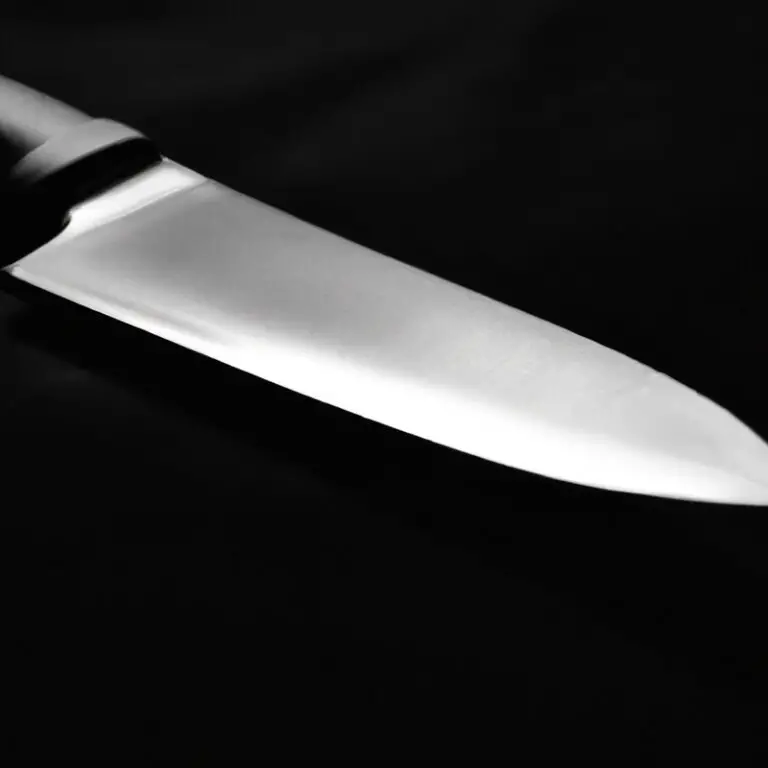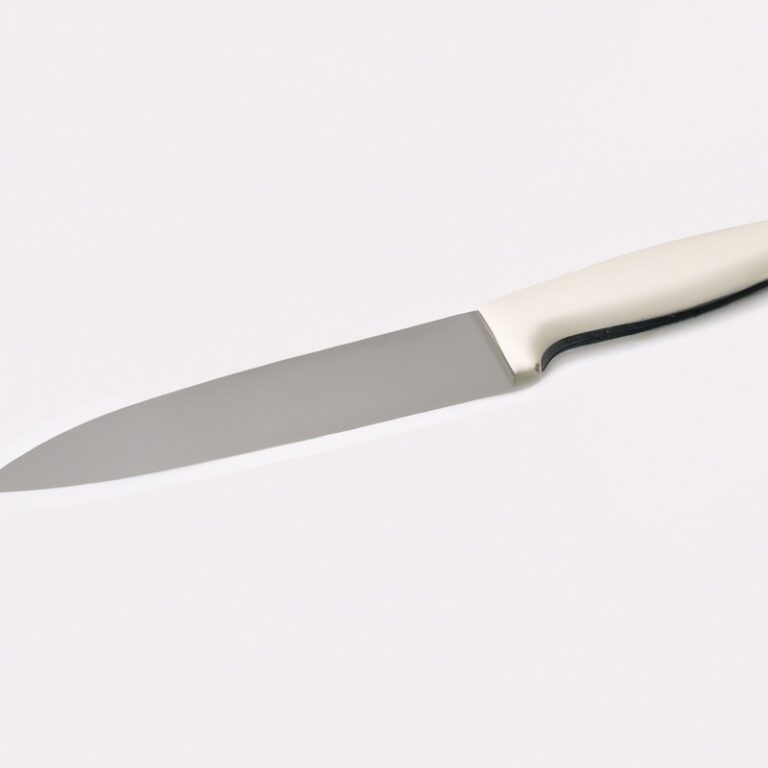How To Safely Julienne With a Chef Knife? Slice It Up!
Key Takeaways:
- Always use a sharp chef knife to julienne, as a dull blade can slip and cause injury.
- Maintain a secure grip on the knife and keep your fingers curled under to protect them while cutting.
- Follow the proper technique by first creating a flat surface on the ingredient and then cutting it into thin, uniform strips.
- Practice regularly to improve your julienne skills and avoid accidents in the kitchen.
Are you tired of unevenly cut vegetables that ruin the presentation of your dishes? Look no further because julienning with a chef knife is the solution to your problems.
However, improper technique can lead to serious injuries.
That’s why today, I’ll guide you through the essential steps of julienning with a chef knife, from choosing the right knife and preparing the ingredients to gripping techniques, angle, direction, and maintenance. Plus, I’ll share tips and tricks to speed up the julienning process without compromising your safety.
Get ready to elevate your chopping game and wow your guests with perfectly julienned veggies!
| Step | Description |
|---|---|
| Step 1 | Begin with a sharp chef knife. Dull knives are more dangerous than sharp ones. |
| Step 2 | Set up your cutting board. Place a damp towel underneath it to prevent it from slipping. |
| Step 3 | Choose a vegetable that is stable and won’t roll easily, like a carrot or zucchini. Cut off the ends to create a flat surface on both sides. |
| Step 4 | Cut the vegetable in half lengthwise to create two halves with flat surfaces. |
| Step 5 | Place one half of the vegetable flat side down on the cutting board. |
| Step 6 | Hold the vegetable securely with your non-dominant hand, using your fingertips to grip the top edge of the vegetable, keeping them away from the blade. Tuck your thumb in to avoid cuts. |
| Step 7 | Hold the knife with your dominant hand and position the blade so that it is perpendicular to the vegetable. |
| Step 8 | Make a series of even, straight cuts about 1/8 inch wide, using the knuckles of your guiding hand to keep the cuts even in thickness. |
| Step 9 | Continue until the entire half of the vegetable has been cut into sticks. |
Understanding the importance of proper technique in julienning with a chef knife
Proper technique is essential when it comes to julienning with a chef knife. It ensures that your cuts are precise and even, which is crucial for both aesthetics and even cooking.
In addition, following proper technique while julienning with a chef knife will prevent injuries, making it a safer and more enjoyable experience.
Using the right chef knife for julienning, holding the knife correctly, cutting at the right angle, and avoiding common mistakes are all key components of proper technique when it comes to julienning with a chef knife.
The right chef knife for julienning: features to look for
The right chef knife for julienning should have a thin, sharp, and straight blade with a length of at least 6 inches. The blade should be made of high-carbon stainless steel to ensure durability and sharpness.
A comfortable, non-slip handle is also essential to prevent accidents during use.
For optimal performance, choose a knife with a full-tang construction, which means the blade extends through the handle, providing a balanced and sturdy grip. When shopping for a chef knife, prioritize quality and reliability over price, as investing in a high-quality knife will enhance both safety and productivity in the kitchen.
Preparing your ingredients for julienning with a chef knife
Before julienning with a chef knife, it’s important to prepare your ingredients properly to ensure a safe and efficient process. Follow these steps for preparing your ingredients for julienning with a chef knife:
- Choose fresh and firm vegetables or fruits like carrots, cucumbers, zucchinis, and apples.
- Wash and dry your ingredients thoroughly to remove any dirt or moisture.
- Trim off the ends of your vegetables or fruits and cut them into uniform shapes that are easy to handle and will fit in the chef knife.
- Cut the vegetables or fruits into thick planks to create a stable surface for julienning.
- Stack the planks on top of each other and slice them into matchsticks that are about 1/8-inch wide and 2-3 inches long.
Remember to always use a sharp chef knife for preparing your ingredients to avoid applying unnecessary pressure, which can lead to injury. With these preparation steps, you’ll be ready to julienne with a chef knife safely and effectively.
Gripping techniques for safe julienning with a chef knife
Gripping techniques are crucial for safe julienning with a chef knife. Hold the handle with your dominant hand, and position your index and middle fingers around the blade’s base close to the handle.
Curl your fingers around the handle, with your thumb gripping the opposite handle’s side.
Maintain a firm, yet comfortable grip, and keep your fingers away from the blade’s edge. Use your other hand to stabilize and guide the food for even cuts.
Remember to keep your fingers and thumb tucked in and away from the knife’s path.
With proper gripping techniques, you can safely julienne various ingredients with ease.
Angle and direction for precise julienning cuts with a chef knife
To achieve precise julienning cuts with a chef knife, it is essential to maintain a consistent angle and cutting direction. The ideal angle for julienning is between 30 and 45 degrees.
Begin by cutting off the top and bottom of the vegetable, creating a flat surface to work with.
Place the vegetable vertically on the cutting board and make a single slice, cutting through the middle of the vegetable, creating two even halves. From here, make thin, parallel cuts downwards, ensuring that each slice is of the same thickness.
Keep the knife moving in a back and forth motion, working your way through the entire vegetable.
By following this technique, you can achieve precise and uniform julienne cuts every time.
How to maintain and sharpen your chef knife for safe and effective julienning
Proper maintenance and sharpening of your chef knife are crucial for safe and effective julienning. To maintain the sharpness of your blade, it is important to clean it after each use and store it properly.
Avoid cutting surfaces such as glass, ceramic, or stone, as these can dull the blade.
Instead, use a wooden or plastic cutting board. Sharpen your chef knife regularly using a honing steel or sharpening stone.
The honing steel is used to maintain the blade’s sharpness, while a sharpening stone is used to restore the blade’s edge.
Hold the blade at a 20-degree angle and move it along the honing steel or sharpening stone multiple times. Be sure to clean the blade after sharpening.
Remember to use caution when sharpening your chef knife and consider seeking professional assistance if you are unsure.
By maintaining and sharpening your chef knife, you can ensure safe and precise julienning.
Common mistakes and how to avoid them when julienning with a chef knife
Common mistakes when julienning with a chef knife include inadequate preparation of ingredients, improper grip on the knife, incorrect angle and orientation of knife, and using a dull blade. To avoid these mistakes, make sure to properly prepare your ingredient beforehand, maintain a firm grip on the handle of your knife, and hold your knife at a 45-degree angle to the ingredient before proceeding with your cuts.
Always use a sharp knife and maintain its sharpness.
Remember to keep your fingers safe by tucking them in while cutting. By keeping these in mind, you can avoid accidents and execute the julienning technique precisely and safely.
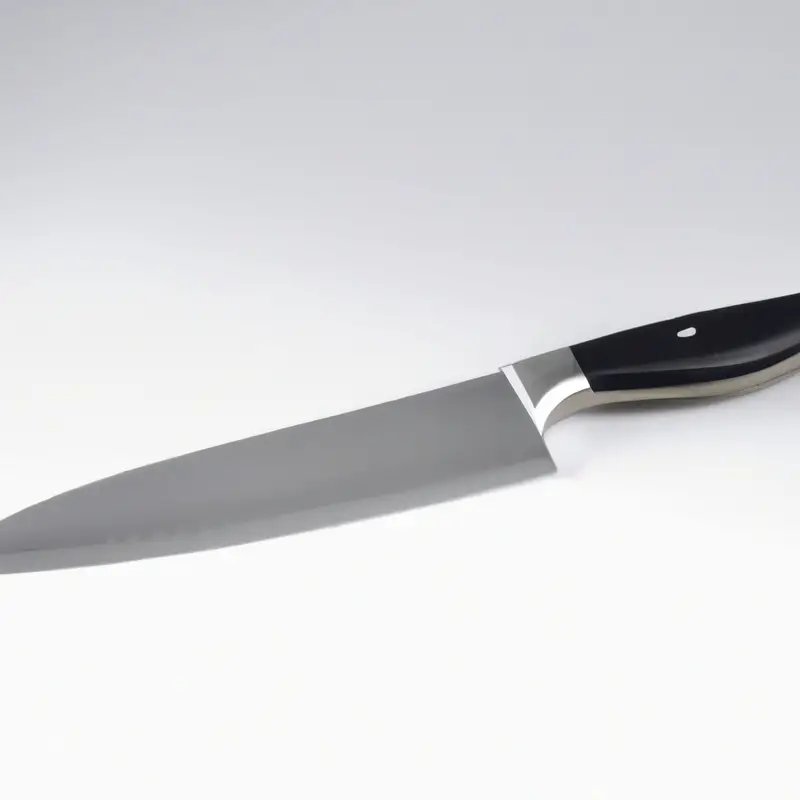
Tips and tricks for speeding up julienning with a chef knife without sacrificing safety
Here are some tips and tricks for speeding up julienning with a chef knife without sacrificing safety:
- Practice, practice, practice! The more you julienne, the faster and more efficient you will become.
- Use a high-quality chef knife with a sharp blade. A dull blade can slow you down and increase the risk of injury.
- Prepare your ingredients ahead of time, making sure they are clean, dry, and uniform in size. This will make it easier and quicker to julienne.
- Use a claw grip when holding the ingredient to protect your fingertips from the blade.
- Use a cutting board with a damp towel underneath to prevent it from slipping during julienning.
- Use a rocking motion with the blade to cut through the ingredient quickly and efficiently.
- Take breaks when necessary to prevent fatigue, which can increase the risk of injury.
By following these tips and tricks, you can safely and efficiently julienne with a chef knife, saving time and effort in the kitchen.
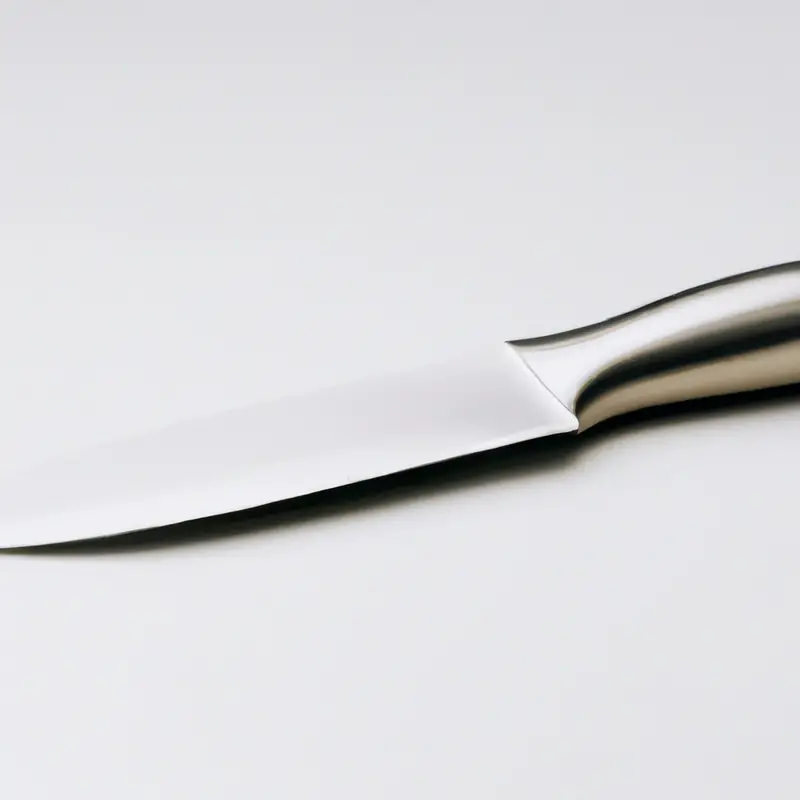
How to incorporate julienning into your cooking routine for quick and delicious dishes
Once you’ve learned to safely julienne with a chef knife, it opens up a world of possibilities for delicious and visually appealing dishes. Here are some ways to incorporate julienning into your cooking routine:
- Salads: Julienne carrots, cucumbers, and bell peppers to add texture and flavor to your salads.
- Stir-fries: Quickly cook thinly sliced beef, chicken, or tofu with julienne vegetables like onions, mushrooms, and carrots for a flavorful stir-fry.
- Garnishes: Julienne herbs like basil or chives to add a pop of color and flavor to your dishes.
- Soups: Top creamy soups with a sprinkling of julienne vegetables to add some crunch.
- Appetizers: Roll up julienne vegetables in rice paper or lay them over crostini for a tasty and elegant appetizer.
With a little bit of practice, julienning can become a fun and easy technique to elevate your cooking to the next level.
Final Verdict
Julienning with a chef knife may seem intimidating, but with the right technique, equipment, and mindset, it can become a safe and efficient way to enhance your culinary skills. We have discussed the importance of proper preparation and gripping techniques, the angle and direction of your cuts, and how to maintain and sharpen your knife.
By avoiding common mistakes and implementing our tips and tricks, you can speed up your julienning without sacrificing safety or quality.
Remember, practice makes perfect, so take your time, be patient with yourself, and don’t hesitate to seek guidance from a professional chef if needed. By incorporating julienning into your cooking routine, you can elevate your dishes and impress your guests with your newfound skills.
Keep in mind that safety always comes first, and with that mindset, happy julienning!

